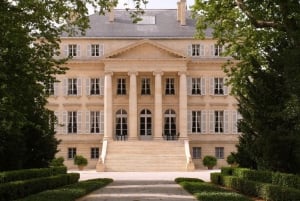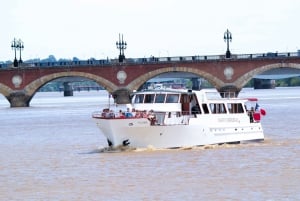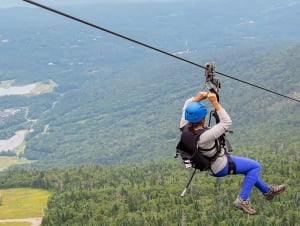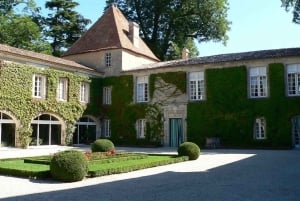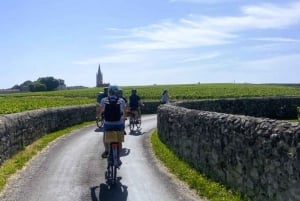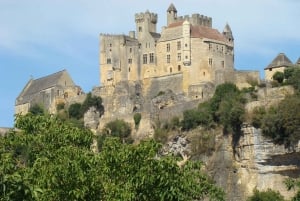Armagnac
Armagnac districts include: Bas Armagnac, Tenarèze, Haut-Armagnac.
Armagnac is the oldest wine based 'eau de vie' in France. It is produced in the heart of Gascony, Southwestern France, by a single distillation of white wine in an Armagnac alembic (still) and then left to age for many years in oak barrels. Armagnac is another of those best kept secrets of France and many who know this brandy will tell you it is better than Cognac.
In 2010 the Armagnac region celebrated 700 years of brandy making. First to record the merits of Armagnac were Christian monks who used it for medicinal purposes. In 1310 Maitre Vital Dufour a future Cardinal wrote,"This water, if taken medicinally and soberly is said to have 40 virtues...It enlivens the spirit when partaken in moderation, recalls the past to memory, renders men joyous, preserves youth and retards senility". And there’s more - the Armagnac "eau de vie" was also known to cure hepatitis, gout, ulcers, and open wounds. Even though the area of Gascony is most famous for fois gras, the people of Armagnac believe they live longer than anywhere else in France because of moderate consumption of what the future cardinal called "fire water" or Armagnac. Try to top that, Cognac!
Grape spirit or brandy from the Armagnac region of Gascony can be found about 100 miles south of Bordeaux. Some of the best of Armagnac is made at the edge of Les Landes, the heart of Bas Armagnac. The Tenarèze district is to the east and further east is Haut-Armagnac. Armagnac is described as fuller and rounder than Cognac and with all those other virtues, once discovered may make you a fan for life.
Unlike Cognac, Wood maturation is an essential of Armagnac and they are left in oak casks until bottling. At this stage some, like cognac, are 'broken down' with water to the commercial selling strength of 40% alcohol. Even after 700 years makers continue the debate about the best process of creating Amagnac. There can be a range of 60 to 70% alcohol. It is possible to find older Armagnacs bottled at cask strength whatever the alcohol content. As Armagnac matures more slowly than cognac a quirk of French law allows sale at 2 years as opposed to the aging of 3 years for Cognac. Armagnacs like Cognacs are blended but there are single vintages of great age that are more common.
Why don’t you know about this magic potion? Armagnac never made the elite list like the brandies of Cognac. In the 17th century the area was 100 miles away from Bordeaux trade and had no natural waterways to get it there. Even if there had been a means to reach Bordeaux, traders protected their own Bordeaux wines. It was thanks to the Dutch that Cognac was made viable to the international markets. The vine disease of phylloxera which crippled Bordeaux in the late 1800’s almost wiped out the Armagnac area. After World War I and into the 1930’s in the worst of a world economic slump Armagnac could not recover. After the 2nd World War young and cheap Armagnacs flooded the market giving this brandy a reputation as the poor relative of Cognac. Cognac continued to grow with powerful names behind them, Hennessey, Martell, and Courvoisier, etc. Eventhough Armagnac never found its marketing guru like Cardinal Vital DuFour again, it just kept getting better.
The area of Gascony is a French destination for gastronomes or foodies. It is renowned for its spectacular culture of regional food such as fois gras, confite of duck and goose, amazing cheeses, and vegetables. Excellent small restaurants and hotels present them deliciously and plainly. Armagnac is a superb accompaniment with many, especially fois gras.
Armagnac remains the least industrialized of the French spirits and thus a true demonstration of French individuality. The best Armagnacs demand higher prices than prized Cognacs. Fine family-run Armagnac distilleries with generations of knowledge and dedication produce Amagnacs that would make the Cardinal proud! They are in this ancient area of Southwest France waiting for you to discover them.



